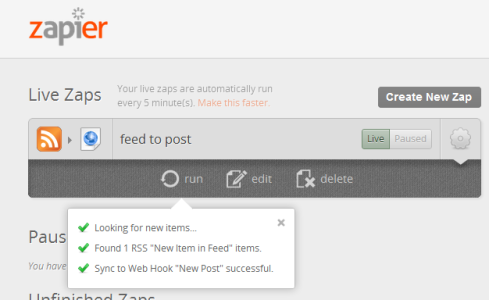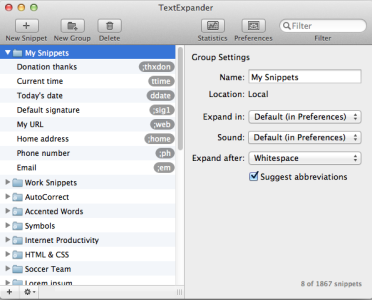I recently had the pleasure of attending Open Source Bridge and noticed several factors that made it an incredibly useful and enjoyable conference to attend. Open Source Bridge is an annual conference that takes place in Portland, Oregon (just like OSCON). It covers a variety of topics related to open source software, also similarly to OSCON. But while a full-access pass to OSCON runs about $2,000, a ticket to Open Source Bridge is $300. I love community-run conferences!
Full disclosure, I received a press pass for Open Source Bridge. (I’ve also received free passes in the past to other conferences I might reference in this post through volunteering, sponsorships, or client relationships.)
Community-run conferences are a much better opportunity for many people than many other types of events. Don’t get me wrong; there’s plenty of value to be had at mega-conferences and other types of events, as well. But considering the lower prices associated with community-run conferences, I always come away feeling like I’ve gotten so much for my money. Here’s why.
Community-Run Conferences Have More Room for Dissenting Opinions
The voices you hear at big conferences are often those speakers who are well-established authorities within their specialties. Obviously, big events need speakers who the widest possible audience will recognize in order to sell tickets. But when you have the ‘official’ opinion up on the stage, it’s harder for a speaker with a dissenting opinion to get on the schedule. The decision may be as simple as "We’re covering that topic already, so why should we have a second speaker discussing the same material?"
But that process does mean that different points of view are automatically excluded. The same doesn’t hold true at a community-run conference. Because a community-run conference almost always looks to the community first to choose speakers, there are more opportunities for diverse opinions:
- Community-run conferences are generally more welcoming to newer speakers, including those with very different perspectives from the status quo.
- Community-run conferences don’t have to toe the sort of party lines that a company-run conference must. This might explain why all the major hacker conferences are actually community-run events. Even big sponsors only have a limited impact on what can be said at a community-run conference.
- Community-run conferences can afford to take risks on niche topics that may only appeal to ten or twenty people out of the entire set of attendees. Big conferences have to fill rooms to make economic sense.
- Attendees at community-run conferences are more likely to pay for their own tickets out of pocket, so they don’t have to justify a particular event to a manager who controls the company budget for conferences. In turn, that means that community-run conferences can afford to offer more sessions on non-business topics.
The sort of variety that a community-run conference offers is more fun (at least for me). I’m far more likely to wind up at a session covering something I know very little about but that will dramatically change the way I see a particular issue. One of the first sessions I attended at Open Source Bridge, for instance, was on OpenMRS — an open source software project I was entirely unfamiliar with — which offers open source medical record management software. I chose the talk because I’m interested technology and health, but I learned a great deal about the problems international open source projects face, how a project can create software that’s usable in places with limited power and internet access, and even the unexpected localization issues that a hospital in Somalia might have as opposed to a hospital in Kenya. Perhaps more importantly, I got a very different perspective on open source technology as a whole that I can already tell will influence my own work.
Community-Run Conferences Have More Opportunity for New Connections
The argument that smaller conferences are easier to meet people at than their larger counterparts seems counter-intuitive. But large conferences are overwhelming even for the most outgoing people. We’re more likely to find a few people to hang out with at a time, to provide a buffer against the thousands of attendees at a conference like OSCON. It’s a paralysis caused by too many people. Personally, at particularly large conferences, I tend to find a "conference buddy" who I cling to to make sure I don’t get washed away in the sea of humanity.
At smaller conferences, however, I’m more likely to go around and introduce myself. I noticed at Open Source Bridge that I knew a large number of attendees and, as a result, I felt very comfortable and was better able to introduce myself to new people. After all, if I were to encounter a problem, I could always retreat to talk with people who I already knew.
Those connections occur outside of the actual length of the conference, as well. Conference organizers have varying levels of passion for the events they create. On the less passionate end of the spectrum, those individuals who are paid to organize particular conferences probably care about the events they manage, but not to the point where they’re talking about their next conference constantly. In contrast, someone organizing a conference out of sheer passion is going to tell everyone they know about the next event. Even the problems will be more visible, because that organizer’s friends will get to hear every last detail about the argument with the venue staff (whether anyone wants to or not).
The community is more long-lived as a result. Rather than moving on to the next conference at their employer, the organizer of a community-run conference’s next event is likely to be either next year’s conference or a closely related event. The organizers can pull the community along, maintaining excitement throughout the year between conferences.
Community-Run Conferences Have More Room to Experiment with New Improvements
A code of conduct seems like such a simple thing. And, yet, many large conferences of every type seem to struggle with implementing such codes.
Of course, there are community-run conferences without codes of conduct still. But many are more open to the idea of adding on a code of conduct — and seem more willing to adopting an existing, proven code without feeling that they need to develop a new code entirely from scratch. Those communities who aren’t willing to add such codes, well, that information can be valuable, too.
Because a community-run conference has the ability to quickly evolve from event to event, such conferences have more opportunities to experiment with better practices. As a for instance, when attendees registered for this year’s Open Source Bridge, they each had the opportunity to choose between three colors of badge lanyards: blue, yellow, and red.
- A red lanyard indicates that the wearer does not want their photo taken at all.
- A yellow lanyard indicates that would-be photographers need to ask before taking the wearer’s photo.
- A blue lanyard indicates that the wearer is comfortable with having their photograph taken at the conference.
It’s a simple visual cue that can make a world of difference in making a wider variety of attendees comfortable with a particular event. There are a whole host of reasons that people may not wish to be photographed even if they’re at a public event. The default for most events is that everyone who happens to be carrying a camera (which you can read as all of us) can take photos and even recordings of anyone who happens to be at the event. I’m not entirely sure how this became the norm, but it’s not actually a reasonable approach. Event organizers may ask for a bulk permission to photograph or otherwise record attendees, but other attendees don’t usually take any steps to make sure that their photography subjects are comfortable with the situation.
This year’s lanyards aren’t Open Source Bridge’s first experiment in providing visual cues about appropriate behavior. Last year, the conference offered stickers for people to place on their name badges to express photography preferences
I can’t categorically state that lanyards are the best way to communicate these sorts of preferences; the only way to figure out such factors is to run an experiment or two. Community-run events seem more willing to do so, if only because the logistics of testing a new approach with a few hundred attendees is far easier than with a few thousand. Even better, most community-run events are put together by passionate people — and passion is rarely exclusive. If you are willing to do the hard work to bring information about your topic of choice to a wider audience, perhaps you’re also more willing to figure out the mechanics of running inclusive events.
Support Your Local Community-Run Conferences
I’ve always been lucky to be parts of communities where community-run conferences happen regularly. I grew up going to conventions for various bits of science fiction and fantasy fandoms. I used my student status in college to get cheap passes to all sorts of conferences (including a ton of writing events). When I started learning more about technology (especially programming), I went to BarCamps and other unconferences, as well as other small community-run conferences of a more traditional nature.
I’m happy to pay money for these sorts of conferences, but it’s also important to support them in other ways. Even small conferences take a ton of work, especially when they’re first starting up. Helping on even basic tasks like setting up chairs in a conference space is good. Open Source Bridge ran smoothly because around 70 volunteers put in their time. Some of those volunteers worked for months to handle every detail of the conference; some put in a few hours of work in exchange for a free ticket. Either way, they made the conference possible.
Especially if you come from a community that doesn’t have a strong tradition of organizing its own conferences, consider what you can do to volunteer. You never know — you might wind up organizing one of those community-run conferences yourself.
Image by Flickr user Reid Beels





